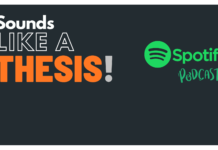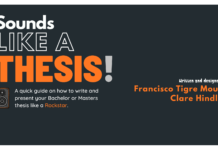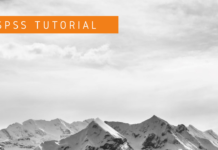For some reason people have sleepless nights worrying if they’ll fail their thesis for plagiarism.
So let’s have a look if you really can plagiarize without knowing it and what you can do to be sure you’re on the safe side.
Plagiarism fundamentally means you cheated. However, as most things in life, it’s not that black and white. Yes, the big bad plagiarism of cut and paste and hoping no one notices exists and means 0% and a warning or ex-matriculation, but most people are highly unlikely to resort to those tools and tricks.
Understanding Plagiarism
We’re more interested in what can go wrong unintentionally and how you can avoid it: Just to get it out of the way, here’s a list of how to cheat…
a. Rewriting from other sources: Using someone else’s work and trying to hide this by simply rewording. In this case you’re not stealing the exact words, but are 100% stealing their ideas. Don’t forget plagiarism is about stealing ideas and not just words.
b. Patchwork: Copying and pasting from different sources hoping that the variety of sources will hide that it isn’t your work. This can involve pasting sentences together, paragraphs – many people have been quite inventive!
c. Buying, downloading or borrowing any work that isn’t your own.
Hopefully you don’t need to worry about the above, as you wouldn’t do it!
Accidental Plagiarism
Now onto the ‘But I didn’t know, I didn’t do it deliberately’ bit….
Accidental plagiarism: Unfortunately, there are various reasons why people do plagiarize without intending to fool or deceive anyone.
a. Not knowing when and how to cite: It seems to slip by some people, but
IF A SOURCE IS CITED IN YOUR TEXT, IT MUST BE IN YOUR REFERENCE LIST. If you include any information which is not general knowledge, then you need to cite it. For example, you don’t need to cite that Berlin is the capital of Germany, but you do need to cite the number of tourists visiting Germany in 2018. If you’re not sure what constitutes ‘general knowledge’, cite it.
IF IN DOUBT, CITE IT.
It’s worth thinking about, that if you have a paragraph with no citations, that means every single idea in that paragraph is your original idea. Not wanting to doubt your creative powers, but in a thesis (especially the literature review), this is highly unlikely. It’s easy for you to re-read each paragraph and check if citations are missing.
b. Not knowing how to summarize or paraphrase. It can be quite difficult to rewrite someone else’s work in a summary form. However, remember that even when you give the source, you must be clear on whether this is a direct quote or your summary. If you are claiming it is a summary in your words, then it must be. There are lots of online sources available to practice summarizing and paraphrasing (e.g. https://owl.english.purdue.edu/owl/resource/589/01/), so be sure you know what you are doing.
c. Reusing an old paper: There still seems to be confusion amongst students about this. Once a paper has been submitted, it cannot be submitted again for the same or another course. This is often called self-plagiarism, but does not differ from other forms in basically being an attempt to cheat. If you write a research paper in your final semester, you can’t simply add to this already submitted piece of work and call it your thesi
MOST UNIVERSITIES USE THE TURNITIN.COM WEBSITE TO CHECK YOUR WORK FOR PLAGIARISM.
Check out the site, it has definitions, examples and statistics.
Help! – What strategies Will Help Me Avoid Plagiarism?
Perhaps an important note is that people grading your work are not on the lookout for plagiarism. We start with the basic belief that you have written the work, forgetting a comma in your citations will not lead to accusations of plagiarism.
a. Create a set of sources before starting to write. Consider using one of the free online referencing tools e.g. citavi/ zotero. This allows you to store and sort your sources and cite from them.
b. Know the citation rules: if you use a tool (such as citavi, zotero above), you should be OK, but check your work, know what needs to be done.
c. When you summarize/paraphrase do it after reading the source, but no longer looking at the source. Then go back and check you have in fact used your own words.
d. Speak to your supervisor.
e. Proofread and edit.
SUMMARY
You should now be aware that no one is on your case. Plagiarism is your responsibility and easy to avoid.
• Check your work against the original: Should either be cited “..” with source, or your words – with source.
• Include sufficient sources: In number and quality.
• Use free online software: zotero, citavi, turnitin.
Hopefully you’re now all set up for a copycat free lifestyle.
Source it and you’re fixed.
What makes me feel good when writing: #CAETANO VELOSO #JONAS KAUFMANN (if you don’t know them, check them out).






